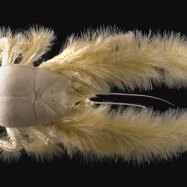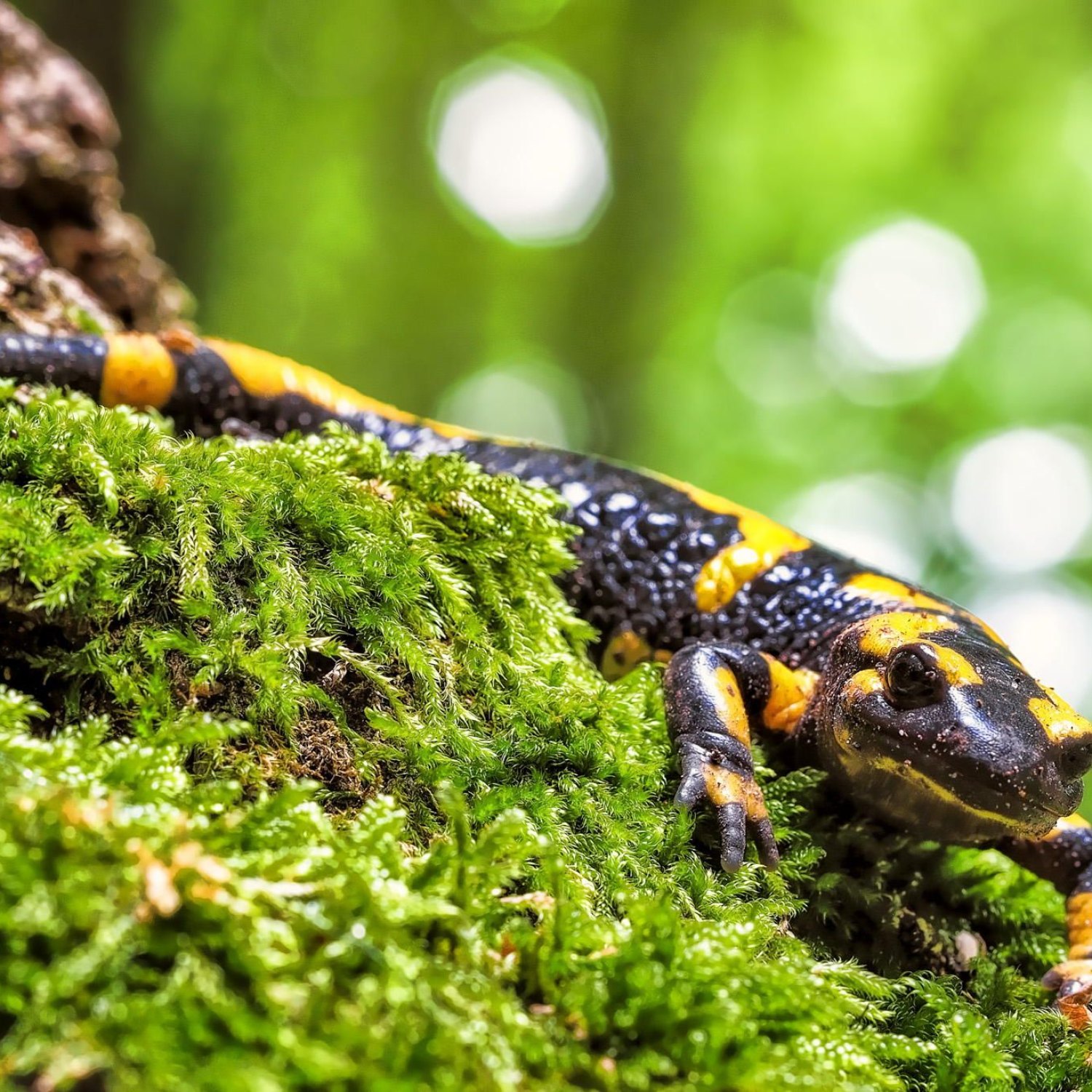
Fire Salamander
Approximately 15-25 centimeters
The Fire Salamander, found in Southern and Central Europe, has a sleek and elongated body with short legs and a long tail. It belongs to the Salamandridae family and can grow up to 15-25 centimeters in length. Despite its vibrant colors, it is not recommended to handle this beautiful creature as its skin produces toxins when stressed. #FireSalamander #EuropeanAnimals #Salamandridae
Animal Details Summary:
Common Name: Fire Salamander
Kingdom: Animalia
Habitat: Forests, woodlands, and wetlands
The Fascinating Fire Salamander: A Deadly Beauty
A slimy, black creature with striking yellow or orange spots might not seem like the most appealing animal at first glance. But, upon closer inspection and understanding of its unique features, one can't help but be fascinated by the fire salamander.Scientifically known as Salamandra salamandra, the fire salamander is a species of amphibian that is found in various parts of Europe. Its striking coloration makes it stand out in the wild, and its venomous nature adds a layer of danger to its already alluring appearance Fire Salamander.
As we delve into the world of the fire salamander, we will uncover the mysteries and uniqueness of this creature that has captured the attention of scientists, nature enthusiasts, and even folklore.
The Basics of the Fire Salamander
The fire salamander belongs to the kingdom Animalia, making it a part of the vast and diverse animal kingdom. It falls under the phylum Chordata, which includes all creatures with a notochord, such as vertebrates like fish, birds, and mammals.Within the class Amphibia, the fire salamander belongs to the order Caudata, which contains around 670 species of salamanders, newts, and mudpuppies. The fire salamander is categorized under the family Salamandridae, which includes other salamander species that are native to the Northern Hemisphere.
The fire salamander is primarily found in forests, woodlands, and wetlands, making it a creature that thrives in environments that have plenty of water resources. It is a carnivorous creature, feeding on insects, worms, snails, and other small creatures that it can swallow with its relatively small mouth.
The Unique Coloration of the Fire Salamander
One of the most distinctive features of the fire salamander is its coloration. Its sleek and elongated body is primarily black, with striking yellow or orange spots or stripes Fishing Cat. This coloration is known as aposematic coloration, which serves as a warning to potential predators of its deadly nature.But, did you know that the fire salamander doesn't always have to be black? It is believed that the color of their skin depends on the pH levels of their environment. In acidic environments, their color tends to be more yellow or orange, while in alkaline environments, they tend to have a darker, almost black color.
This unique coloration makes the fire salamander stand out, making it a popular exhibit in many zoos and aquariums around the world. It is also one of the reasons why it is featured in many European folk tales and legends.
A Deadly Beauty
While the fire salamander may seem like a harmless creature, it actually possesses a deadly weapon - its skin. The fire salamander has glands on its back that secrete a toxic substance called samandarin. This toxin is potent enough to kill or paralyze its predators, making it a formidable creature in the animal kingdom.However, the toxin is only dangerous to humans if ingested or if it comes in contact with an open wound. So, as long as one avoids handling the fire salamander, it poses no threat. In fact, many scientists believe that the fire salamander's bright coloration serves as a warning to humans to stay away, preventing any accidental encounters and potential harm.
A European Native
The fire salamander's geographical distribution spans across Europe, with its natural range encompassing southern and central Europe. It is found in countries such as Germany, Austria, Italy, and the Balkan regions, and was also introduced to the United Kingdom.Its country of origin, however, is still a mystery, as scientists have not yet pinpointed the exact location where the fire salamander first evolved. Some believe it originated in Italy, while others suggest Greece or the Balkan region.
Nevertheless, the fire salamander is deeply ingrained in European culture and is a familiar sight in many localities within its natural range.
On the Brink of Extinction
Despite its unique and interesting features, the fire salamander faces numerous threats that have led to a dramatic decline in its population. Its natural habitat is being destroyed due to deforestation and urbanization, making it harder for these creatures to thrive.Additionally, the fire salamander is also facing competition from invasive species, such as the North American Ruddy Duck, which preys on their eggs and young. Climate change is also a significant threat, as it affects the pH levels of their natural environment, causing changes in their coloration and potentially leading to their demise.
Efforts are being made to protect and conserve the fire salamander, including breeding programs in zoos and national parks. However, it is essential to raise awareness about the plight of these creatures and the need for conservation to ensure their survival.
The Fascination Continues
Despite its venomous nature, the fire salamander continues to capture the fascination of many. Its unique coloration, its deadly defense mechanism, and its status as a European native all contribute to its popularity and intrigue.It has also sparked the interest of many researchers and scientists, leading to various studies aimed at understanding its biology, behavior, and evolutionary history. With every new discovery, the fire salamander reveals itself to be an even more fascinating creature than we thought.
In conclusion, the fire salamander may not be the most adorable or the flashiest animal out there, but it is undoubtedly a deadly beauty that has captured the attention and curiosity of humans for generations. Its striking appearance, unique features, and role in European culture make it a creature that deserves our admiration and protection. Next time you come across a fire salamander, remember to admire it from a safe distance and appreciate its place in the intricate web of life.

Fire Salamander
Animal Details Fire Salamander - Scientific Name: Salamandra salamandra
- Category: Animals F
- Scientific Name: Salamandra salamandra
- Common Name: Fire Salamander
- Kingdom: Animalia
- Phylum: Chordata
- Class: Amphibia
- Order: Caudata
- Family: Salamandridae
- Habitat: Forests, woodlands, and wetlands
- Feeding Method: Carnivorous
- Geographical Distribution: Europe
- Country of Origin: Various European countries
- Location: Southern and central Europe
- Animal Coloration: Black with yellow or orange spots or stripes
- Body Shape: Sleek and elongated body with short legs and a long tail
- Length: Approximately 15-25 centimeters
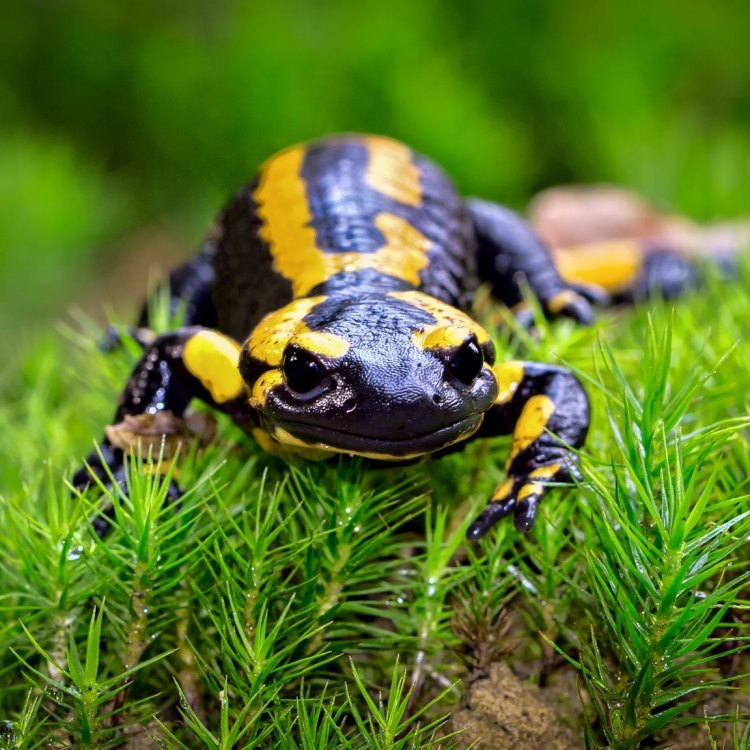
Fire Salamander
- Adult Size: Adults can grow up to 20-30 centimeters in length
- Average Lifespan: 10-15 years
- Reproduction: Oviparous
- Reproductive Behavior: Males deposit spermatophore on the ground and females pick it up with cloaca
- Sound or Call: Produces little to no sound
- Migration Pattern: Non-migratory
- Social Groups: Solitary
- Behavior: Nocturnal and relatively inactive during the day, becomes active during rainy and wet weather
- Threats: Habitat loss, pollution, climate change, and collection for the pet trade
- Conservation Status: Least Concern (IUCN)
- Impact on Ecosystem: As apex predators, they help control populations of insects and other invertebrates
- Human Use: Used in folklore and mythology, occasionally kept as pets
- Distinctive Features: Brightly colored markings, stout body, and bright yellow or orange underside
- Interesting Facts: Fire Salamanders are named for their bright coloration, which was once believed to protect them from fire
- Predator: Birds, reptiles, and mammals
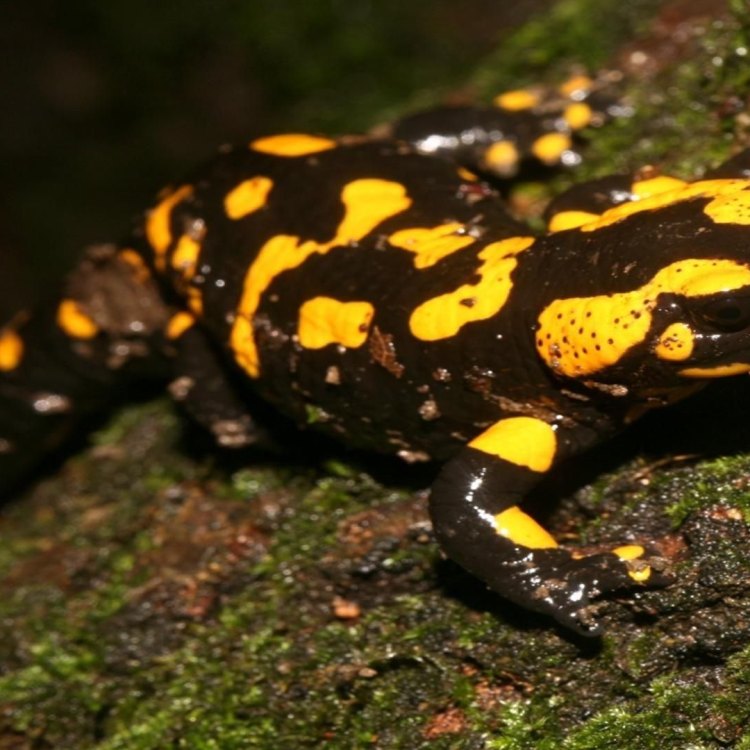
Salamandra salamandra
The Stunning Fire Salamander: A Master of Adaptation and a Guardian of Nature
Nature has endowed us with a diverse array of creatures, each with its unique set of features and abilities. One such fascinating creature is the Fire Salamander (Salamandra salamandra), a striking amphibian that has captured the imagination of humans for centuries. With its vivid coloration and intriguing behavior, the Fire Salamander has become a popular subject in folklore and mythology. But beyond its mystical appeal, this elusive creature also plays a crucial role in maintaining the delicate balance of our ecosystem PeaceOfAnimals.Com. In this article, we will explore the various facets of the Fire Salamander and discover what makes it a truly remarkable creature.The Basics
The Fire Salamander belongs to the family Salamandridae, which is a group of amphibians characterized by their moist, scaleless skin and the ability to regenerate lost body parts. They are endemic to most of Europe, from Spain and Portugal in the west to the Ural Mountains in the east. They are also found in some parts of North Africa and Asia Minor. The adult size of a Fire Salamander can range from 20-30 centimeters in length, making them one of the larger species of salamanders.These amphibians have an average lifespan of 10-15 years, depending on their environment. They are most commonly found in damp forests with access to water, including streams and ponds. They have also been known to inhabit caves, rock crevices, and even abandoned buildings. Their preferred habitat is one with ample coverage and hiding spots, as they are a shy and reclusive species Fierce Snake.
Reproduction and Behavior
As oviparous animals, Fire Salamanders lay their eggs in water bodies. But unlike other salamanders, their eggs are often deposited in a submerged chamber, which is guarded by the male. To initiate the mating process, the male will perform a courtship dance, which involves undulating his body and rubbing it against the female. Once fertilization is complete, the male will deposit a spermatophore (a package containing sperm) on the ground, and the female will pick it up with her cloaca.The Fire Salamander is a solitary creature, and they are rarely seen in groups, except during mating season. They are primarily nocturnal and prefer to stay hidden during the day. However, during rainy and wet weather, they become more active and can be spotted searching for food. Their diet mainly consists of insects, spiders, earthworms, and other invertebrates.
Threats and Conservation
Like many other amphibians, Fire Salamanders face several threats to their survival. One of the most significant challenges they face is habitat loss, primarily due to human activities such as deforestation and urban development. Pollution of freshwater bodies is also a significant problem for these creatures as it affects the quality of their habitat.Climate change is another looming threat to the survival of Fire Salamanders, as it alters the temperature and humidity levels of their environment. This can affect their breeding and reproductive success, leading to a decline in their population. Additionally, the Fire Salamander is also a victim of the illegal wildlife trade, as they are sometimes collected for the pet market.
Fortunately, the Fire Salamander populations are still relatively stable, and they are classified as "Least Concern" on the IUCN Red List. However, conservation efforts are essential to ensure their survival and maintain their vital role in the ecosystem. Organizations and researchers are constantly studying these creatures to better understand their behavior and needs. Raising awareness among the general public is also crucial in protecting the Fire Salamander and other endangered species.
Impact on Ecosystem
As apex predators, Fire Salamanders play a crucial role in regulating the populations of the insects and invertebrates they prey upon. In particular, studies have shown that their presence can reduce the abundance of terrestrial and aquatic invertebrates, thereby helping to maintain a healthy ecosystem. They also act as an indicator species, as their presence or absence can provide insights into the overall health of the environment.Fire Salamanders are also known to contribute to nutrient cycling in their habitats. As they forage on the forest floor, they disturb and aerate the soil, making it easier for nutrients to be absorbed by plants. When they shed their skin, they also release vital nutrients into the environment, benefiting the growth of plants and other organisms.
Human Use and Adaptation
In addition to their ecological importance, Fire Salamanders have also played a significant role in human culture and folklore. In ancient Greek mythology, they were believed to be immune to fire and were often depicted in art alongside the god of fire, Hephaestus. They were also revered in Roman culture, where they were seen as a symbol of purification and protection.Today, they are occasionally kept as pets, although it is generally not recommended due to their specialized needs and delicate nature. However, in some parts of Europe, especially in Spain and Portugal, they are still used in traditional medicine and as an ingredient in certain aphrodisiacs.
One of the most striking features of the Fire Salamander is its distinct coloration, with bright yellow or orange markings on a dark background. Their vivid coloration serves as a warning to potential predators, as it is a common defense mechanism in the animal kingdom. Some studies have found that the bright coloration of the Fire Salamander may also serve as a form of camouflage, allowing them to blend into their environment efficiently.
The Predator-Prey Relationship
Despite their striking colors and defense mechanisms, Fire Salamanders are not immune to predation. They have several natural predators, including birds, reptiles, and mammals. Being mostly nocturnal, they rely on their cryptic coloration and secretive behavior to avoid detection. But when threatened, they can release a noxious substance from their skin, which is toxic to some predators.As with most species, Fire Salamanders are also affected by man-made threats, such as road accidents. Being slow-moving creatures, they are often unable to avoid vehicles and are often killed or injured when trying to cross roads. This highlights the importance of protecting their habitats and creating wildlife corridors to allow them to move freely without risking their safety.
Conclusion
The Fire Salamander is a truly remarkable creature, with its stunning appearance and elusive nature. It serves as a reminder of the incredible diversity of life on our planet, and the importance of preserving and protecting these creatures for future generations. From their crucial role in maintaining the balance of our ecosystem to their rich cultural significance, the Fire Salamander truly deserves our admiration and respect. Let us continue to work towards coexisting with nature and safeguarding these magnificent creatures.
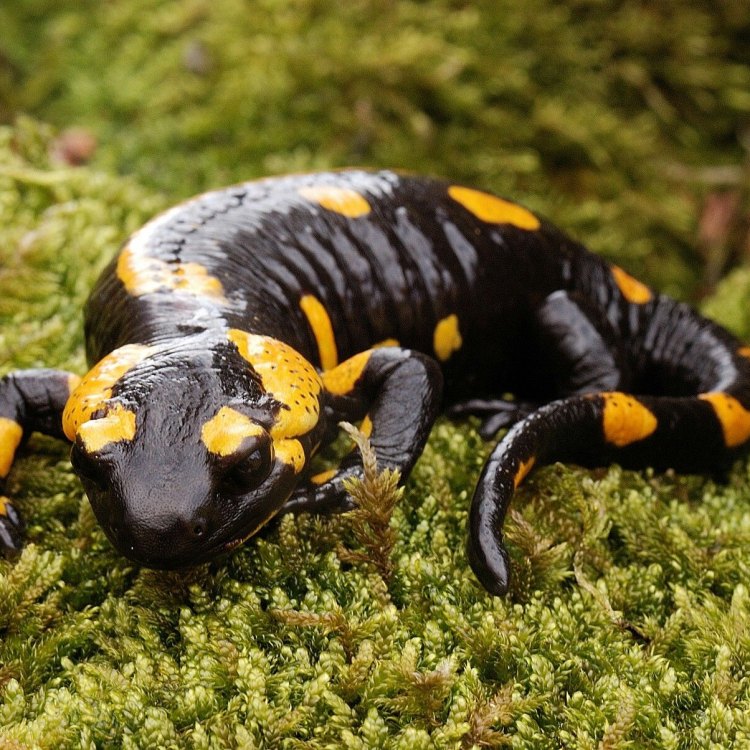
The Fascinating Fire Salamander: A Deadly Beauty
Disclaimer: The content provided is for informational purposes only. We cannot guarantee the accuracy of the information on this page 100%. All information provided here may change without prior notice.






